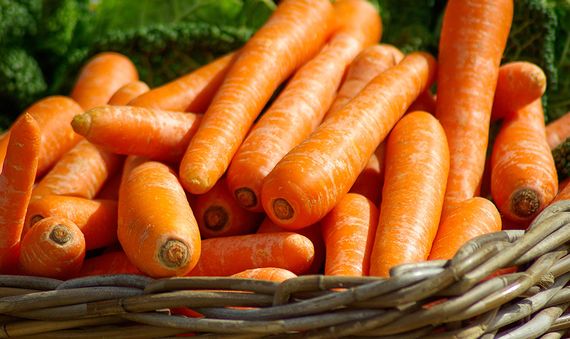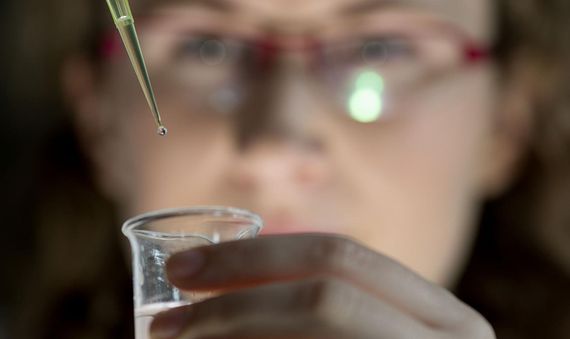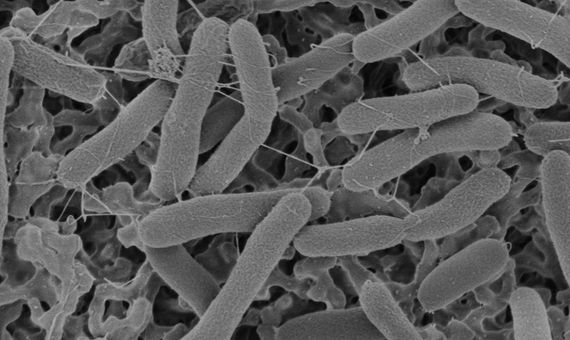The age of fossil fuels is coming to an end. Today, even the major oil companies are now forecasting that peak oil production is behind us, and that we are at the beginning of a long but inexorable decline. With the global drive towards reducing pollution, countries are striving to lower their emissions of greenhouse gases. The most harmful, carbon dioxide, comes mainly from the burning of these non-renewable fuels.
Renewable energies such as wind, solar or geothermal energy, based on inexhaustible and clean natural sources, are the great hope for the energy transition. But the wind, the Sun or the Earth’s internal heat are far from being the only resources available in nature from which we can extract energy. So, while the implementation of these renewable energies is growing across the globe, numerous research groups are experimenting with other alternative procedures to take advantage of the most diverse sources: innovative proposals capable of generating electricity or biofuels from discarded food, water vapour, motion and even tears. Some of these solutions are already being implemented. And while many of them are of limited scale, they could help to solve energy problems in underdeveloped areas or provide a myriad of small sources that could significantly offload demand from large power grids.
Potatoes that provide light
Besides being a staple food for millions of people, potatoes have another quality: they can serve as batteries in locations with limited access to electricity. The potato battery is a classic experiment popular in schools, but Israeli researcher Haim D. Rabinowitch wanted to turn a curiosity into a potential practical solution.
“At first, we mistakenly thought that the potato is the actual source of energy, and that by attaching electrodes we would actually benefit from the high energy stored in it. This, however, is not the case,” Rabinowitch, professor emeritus in the Faculty of Agriculture, Food and Environment at the Hebrew University of Jerusalem, told OpenMind.
The potato conducts electricity between two metals, allowing the current of electrons to move through the wire to create electricity, like the acid does in a normal battery. The discovery by Rabinowitch and his collaborators involves boiling the potato for eight minutes before its use, which breaks down the tissue membranes and boosts the voltage tenfold over the raw tuber. Thus, a single cooked potato, cut into slices and each sandwiched between a copper cathode and a zinc anode connected with a wire, could generate enough power to illuminate a room with LED-powered lighting for 40 days (each potato slice lasts about 20 days), at a cost between five and 50 times lower than with a normal battery.
Among the advantages of the tuber, Rabinowitch points out that it is grown in 120 countries and has a low cost. “The potato or other similarly treated plant tissues could provide an immediate, environmental friendly, and inexpensive solution to many of the low power energy needs in areas of the world lacking access to electrical infrastructure,” say the authors of the research. While the project has offered no new breakthroughs, it has certainly opened up an avenue that could be further exploited in the future.
The power of evaporation
Approximately 50% of the solar energy absorbed at the Earth’s surface drives evaporation, a natural process that affects ecosystems, water resources and the climate. Scientists have spent years studying how to convert this energy into a useful resource.
According to a team of researchers at Columbia University, natural evaporation from open water surfaces could provide energy densities comparable to current wind and solar technologies. “We estimate up to 325 GW of power is potentially available in the United States,” the authors calculate, equivalent to nearly 70% of the country’s electrical energy generation rate in 2015.

The model they have designed envisages a motor placed on the surface of the water that would harness the energy of evaporation through a cycle of stages, absorbing the vapour and releasing the water. Unlike wind or solar power, the researchers propose that the power generated from evaporation be stored so that it can be used at times of high demand. Projects are currently underway to couple evaporation with the use of fluid nanocapillaries to generate electricity, which can harness waste heat from multiple sources to produce energy in a self-sufficient and maintenance-free way.
From cooking oil to carrots
Used cooking oil is deposited in collection depots for recycling. Among its applications, the lubricant can be used to make biodiesel. This biofuel can replace petroleum derivatives, polluting much less and without the drawbacks of biodiesel obtained from crops that occupy large areas of land.
The difficult part is to obtain a pure fluid that complies with EU regulations. Scientists at the Complutense University of Madrid have calculated the purity threshold limit: the acidity of frying oil must not exceed 2%. The scientists found that the more times cooking oil is used, the worse its quality, which influences the purity of the biofuel.

The contamination of waste oil is an obstacle to recycling it for biofuel production, as it must be filtered and purified, which is energy-intensive. Researchers are therefore looking for new processes that allow the dirty oil to be used directly. Scientists at RMIT University in Australia have developed a catalyst that accepts up to 50% contamination in the oil feedstock, making it possible to convert various types of oil and agricultural waste into biofuels or into chemical compounds of industrial interest.
Agricultural waste and organic waste in general, such as food waste, are also a usable source of feedstock for energy production. Spanish and Argentinean researchers used discarded carrots, which did not meet the standards for sale, to generate bioethanol, a biofuel obtained from the fermentation of sugars. In the preparation of the wort, the carrot is chopped up and undergoes a process of enzymatic hydrolysis. This is followed by ethyl fermentation, in which yeast transforms the sugar in the wort into ethanol and carbon dioxide. The last step is to purify the ethanol by distillation.
This process of reuse envisages that the resulting pulp could be used as animal feed, the carotenes would have value for the pharmaceutical and food industries, and the fibres could be used for human consumption.
The power of tears
Tears could bring us more joy than sorrow. A team of researchers led by the University of Limerick (Ireland) has studied their potential to generate electricity. The key is to apply pressure to an enzyme, lysozyme, which is found in tears as well as in egg whites, saliva and mammalian milk.

The ability to generate electricity by pressure is not new. It is known as direct piezoelectricity and is a property of materials such as quartz, which can convert mechanical energy into electrical energy and vice versa. In fact, such materials are already used in mobile telephony, ocean sonar and ultrasound imaging.
But, according to scientists, although piezoelectricity was already known in biological materials, this is the first time it has been demonstrated in something as simple as a protein. The finding that lysozyme crystals generate this type of electricity could have applications in the area of electronics for implantable biomedical devices, as it would enable, for example, the construction of pumps to release drugs inside the body without the need for conventional batteries. Research continues to explore the piezoelectricity of biomolecules and their building blocks, such as amino acids, to exploit their properties in the development of devices.
Electrical bacteria
The knowledge that microbes produce electricity is almost as old as our understanding of metabolism itself: anaerobic bacteria, which grow without air, breathe in other compounds which they oxidise. Oxidation is a loss of electrons, and what is electricity if not conducting electrons from one place to another? But although the foundation of the idea dates back almost to the birth of microbiology, harnessing this electricity in a practical way has been a long process that continues today. The first microbial fuel cells, which transfer electrons directly to the anode of a battery to create the current to the cathode, were obtained as early as the 1970s.

The hurdles are technical; although there are many bacteria capable of generating electricity, it is difficult to find the optimal candidates and grow them in a laboratory, so researchers are working on microfluidic systems capable of capturing these microbes and analysing their suitability, like in a selection process for job candidates.
Microbial fuel cells are currently used for experimental purposes and to treat wastewater—which provide useful substrates for microbes to generate electricity—but experts predict much wider uses for them in the future, with NASA even considering using them to generate electricity on space missions. The discovery that certain bacteria transmit electricity through protein nanowires has also inspired potential medical uses.
Energy from motion
A basic scientific principle that schoolchildren learn is that energy is neither created nor destroyed, but only transformed. And since living things extract energy from food and use it, among many other things, to move, why not try to harvest our movement and convert it into electricity? The concept is not new: regenerative brakes on trains and hybrid cars capture kinetic energy from braking to recharge their electric batteries.

There are a number of projects working on extracting energy from human movement. Some companies are producing pavements capable of converting footsteps into electricity, which have already been installed at London’s Heathrow Airport and on the UK capital’s busy Oxford Street. Researchers and companies are working on wearable systems to capture the energy of movement and use it to recharge personal or medical electronic devices. And while some experts doubt the mass viability of these options, even their small-scale use could help alleviate some of the global energy consumption.
But in addition to movement, humans also produce heat, which is usually wasted. For some years now, there have been systems able to collect the body heat emitted into the environment in crowded places and channel it to warm other buildings. Venues filled with warm bodies, such as concert halls, often expel hot air to the outside. To coincide with the COP26 climate conference in Glasgow, a popular dance club and arts venue in the Scottish city has installed a heat pump system that directs hot air to an storage installation deep underground—producing a kind of artificial geothermal energy—to be used as an energy source for heating the building when not filled with clubgoers. According to its manufacturers, the system will save 70 tonnes of carbon emissions per year.
Laura Chaparro / Javier Yanes
This article was originally published in June 2018 and updated in November 2021.
Comments on this publication